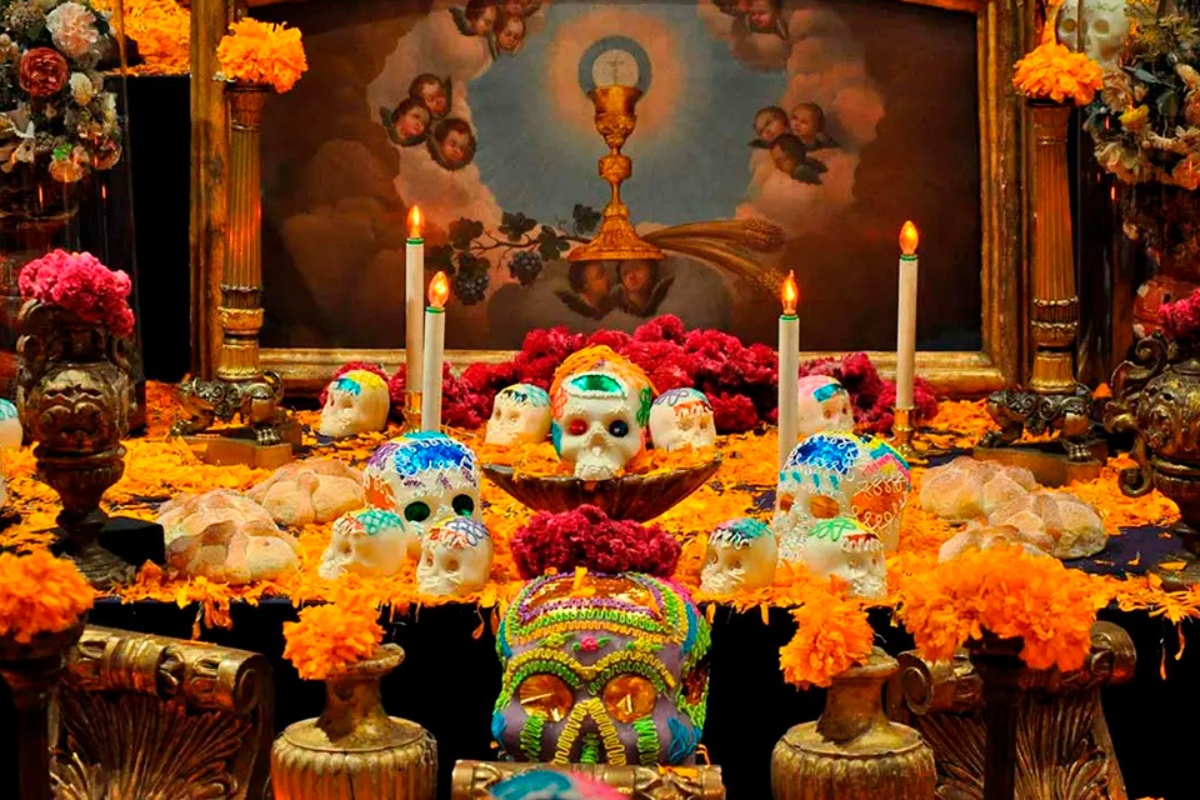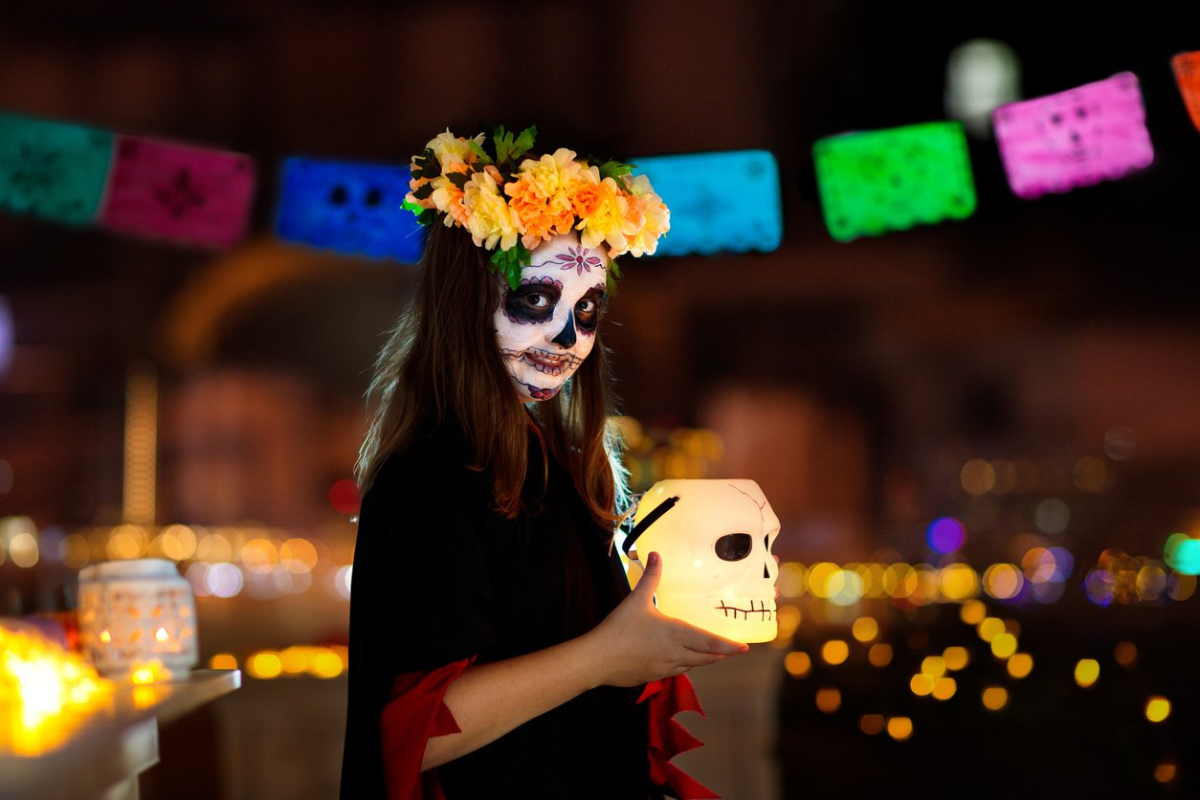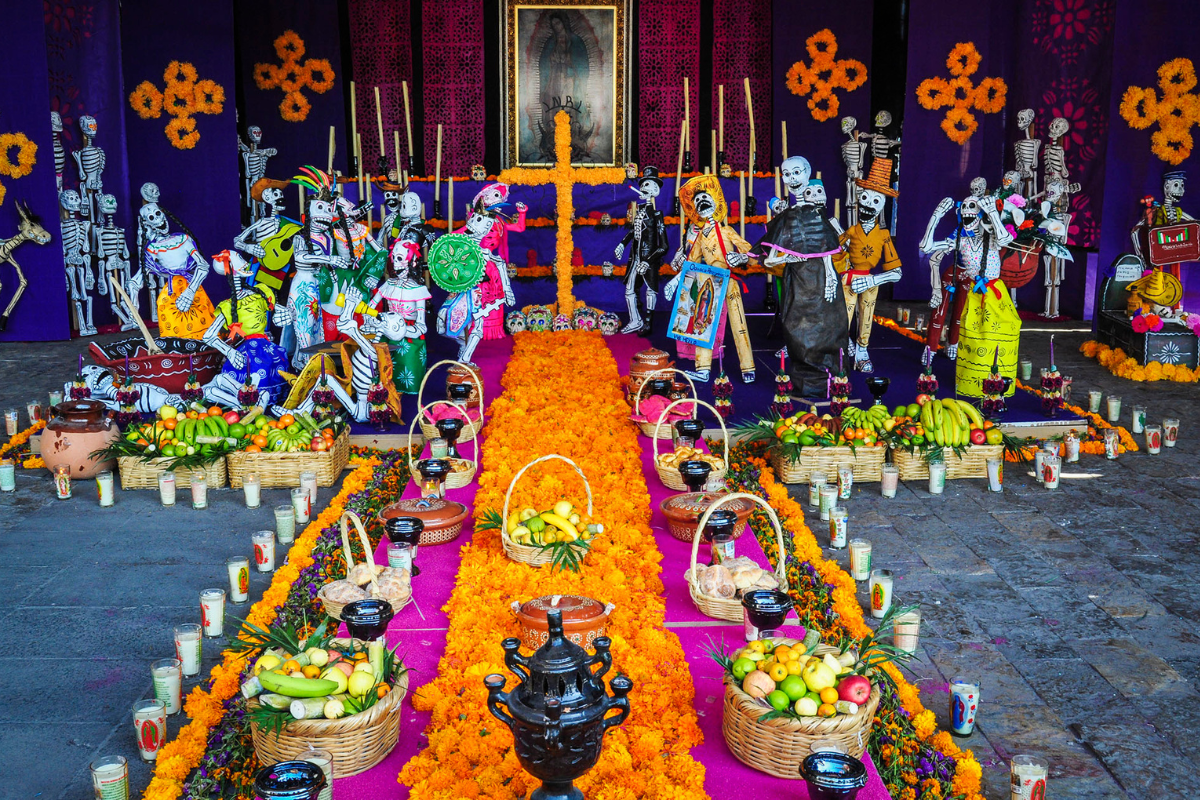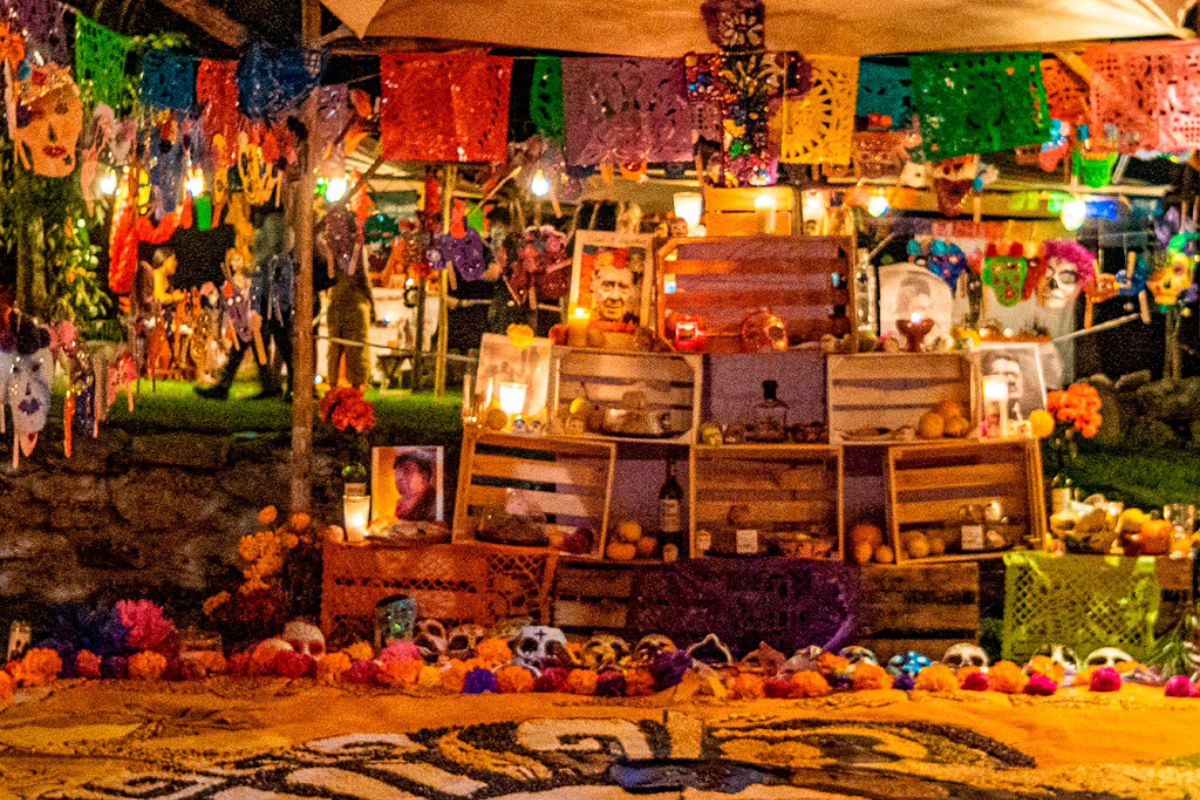When it comes to festivals for the departed souls, people often talk about Halloween but it’s not the only celebration dedicated to the devil. The Día de Los Muertos, a traditional celebration honored with pleasure and rich culture in Mexico, is another holiday with a similar theme.

Traditional Mexicans consider death to be only a stage in the endless development of life. Locals, thus, embrace it as a matter of course. For that reason, the Festival of the Dead has endured for more than 3,000 years and evolved into a celebration of happiness and affection in Mexico.
Every year, during the first two days of November, Día de Los Muertos coincides with Halloween in Mexico. This is an opportunity for families to remember their deceased relatives with cherished traditions and eye-catching events. The Festival of the Dead was formerly seen to be eerie and frightening by the Spaniards, but today, UNESCO has recognized it as an Intangible Cultural Heritage of Humanity. This ancient indigenous religious practice existed in Mexico before the arrival of the Spanish colonists in the fifteenth century.
The worship event of Día de Los Muertos is not as ominous as imagine
Indeed, the Día de Los Muertos festival is not the Mexican version of Halloween. While Halloween is a night of spookiness, this festival of the dead is filled with color and joy, an opportunity to show love and respect for deceased family members.

Photo: FamVeld
Every November, everyone in Mexico, both residents in urban and rural areas, join in the celebration with fancy makeup and vibrant attire. They plan celebrations and parades, sing and dance in honor of their loved ones who have passed away, and remember them in a variety of cheerful manners. This celebration is accompanied by a delighted and affectionate ambiance despite its scary moniker.
According to the indigenous people’s belief these days, the souls of the deceased will return to their family members. Therefore, every Mexican family decorates the altar in the house or the cemetery with mainly yellow fruits, bread, cakes, and handicrafts. In addition, it is indispensable to have lit candles and portraits or commemorative items of those who have passed away on the altars on this day.
Pan de muerto, a sweet bread with a characteristic form from Mexico, is one of the more well-known Mexican meals served at this event. Calaveras are sweet treats designed like human skulls as well. It represents both the impermanence of life and the vigor of the departed.
Children frequently dress up in frightening costumes, donning skull masks and skeleton outfits. Today, with tradition’s norms becoming more permissive, costumes are becoming more varied, sometimes inspired by Disney or sports.
Día de Los Muertos is getting more and more popular, and it has even expanded internationally in many Mexican cities and by people from other cultures with the same religious beliefs thanks to its distinctive and exceptional activities. Amid the bustling atmosphere, there will be magnificent parades and parties all over the streets.

Photo: Getty Images
Día de Los Muertos has a distinct spiritual element, religious significance, and strong national spirit
The origin of the Mexican holiday Día de Los Muertos, which honors the dead, may be traced to ethnic groups that view death as only a stage in the endless cycle of life. The departed are always a part of the community and exist in the minds of their relatives. The day they briefly return to the human realm to see their living kin is known as the Festival of the Dead. This event was first known more than 500 years ago when the Spaniards came to Mexico to make this place a colony and were surprised to see the indigenous people performing a “ghostly” ritual. Initially, the Spanish used many ways to eliminate this custom that had lasted at least 3,000 years, but this festival still exists today and is officially called Día de Los Muertos.
Different communities celebrate Día de Los Muertos on different scales with varying levels of solemnity. For instance, the festival in the town of Pátzcuaro in the Mexican state of Michoacán is separated based on the age of the deceased. In contrast, traditions for all departed loved ones are essentially the same in Mexico City. People frequently plan gatherings to eat and drink throughout the festival and consider this occasion a chance to reunite. In 2008, UNESCO recognized Día de Los Muertos as an Intangible Cultural Heritage of Humanity.
Día de Los Muertos was originally a customary feature of Mexican indigenous culture. However, it is now extensively observed not just in Mexico but also in certain neighboring nations in Central America.

Photo: Festival De Vida y Muerte

